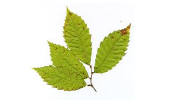Exploring types of parent attachment via the clustering modules of a new free statistical software, ROP-R
DOI:
https://doi.org/10.17505/jpor.2024.26255Keywords:
person-oriented multivariate statistics, cluster analysis, ROP-R, attachment types, MORI coefficientsAbstract
The aim of the paper is threefold: (1) to demonstrate the rich repertoire of clustering capabilities of a ROPstat and R-based new and free software, called ROP-R, by illustrating several analyses with real psychological data; (2) to show how well ROP-R works in tandem with ROPstat software in complex classification analyses; and (3) to explore some nontrivial types of parent attachment using the clustering modules of ROP-R. Four modules of ROP-R are available for performing cluster analyses (CAs), with several methods (e.g., divisive hierarchical CA, k-medoids CA, k-medians CA, model-based CA) not found in other user-friendly menu-driven software. In the paper, mother and father attachment data are used from a study with adolescents (Mirnics et al., 2021) to illustrate how the ROP-R software can be used to perform various CAs and evaluate the results using attractive graphs and useful tables. Comparing different clustering methods, it was found that both standard AHCA and k-means CA could discover a 7-type structure, which was also verified by the nonstandard k-medians CA. However, the nonstandard k-medoids CA and MBCA methods were not very effective in identifying a structure with an acceptable overall homogeneity. Nevertheless, they were able to identify some types through extremely homogeneous clusters.
Downloads
Published
Issue
Section
License
Authors of articles published in Journal for Person-Oriented Research retain the copyright of their articles and are free to reproduce and disseminate their work.

